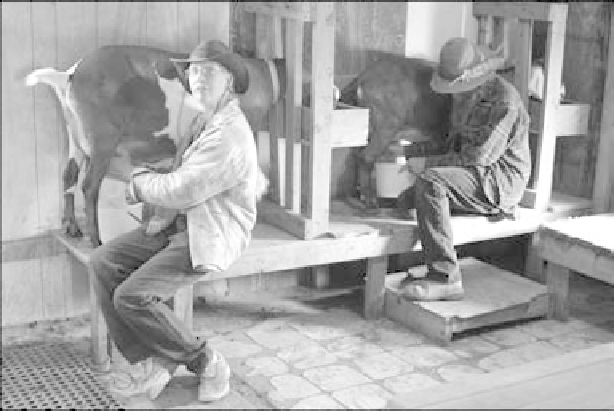Agriculture Reference
In-Depth Information
These milk stands are perfect for keeping the goats semi-restrained and easily feeding in the individual feed
troughs during the milking process.
(Photo courtesy of Nicolás Boullosa)
Follow these steps for milking:
1. Settle the goat or sheep up on the milking stand and use a brush quickly to get rid of any
loose hair and debris. Clean the udder and teat area completely and clean your hands.
2. Milk the goat or sheep into a nonreactive receptacle (we usually use a large glass jar with a
wide mouth or 6-quart stainless-steel bucket) until you've emptied the udder.
3. We generally hand-milk our goats, and it only takes a few minutes to do so. Grasp the teat at
the very top, where it meets the udder, with your thumb and forefinger in a circle. Squeeze
those fingers gently and then push the milk that's now trapped in the teat out by gently
squeezing your second, then your third finger in a fluid wavelike motion. Do not pull on
the teat, as you can damage the ligaments that support the udder. Also take care not to twist
the teat—the motion should be straight and even, and should simply squeeze the milk
from the top to the bottom and out into the bucket.
4. Sanitize the teat immediately after milking as the teat canals will be open and susceptible to
bacterial infections. You can purchase wipes specifically for this, or dip the teat in a disinfec-
tant purchased for goats in a little disposable paper cup.
5. We bring the goat off the stand and tie her by the hay rack so she can eat a nibble of hay
while we tend to the other goats.













